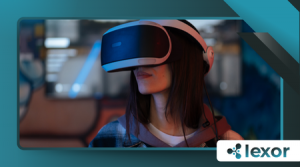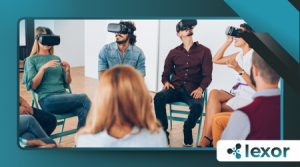How Virtual Reality Is Impacting Event Planning and Conferences

Virtual Reality Is Impacting Event Planning and Conferences fundamentally, reshaping how we conceive, design, and execute gatherings worldwide.
This is not a fleeting trend, but a complete paradigm shift for the industry.
Virtual Reality offers an unprecedented level of immersion and interactivity for attendees, bridging the gap between physical and remote participation.
It transforms passive viewing into active engagement, delivering memorable, sensory-rich experiences. Event professionals now view VR as an essential tool for future-proofing their offerings.
Traditional events face limits in scale, geography, and carbon footprint; VR elegantly solves these constraints.
It allows global reach without the associated travel costs and environmental impact. The technology opens new avenues for sponsorship, content delivery, and data collection, boosting ROI.
We are seeing a move past simple 2D live streams toward sophisticated, persistent virtual environments. These digital venues host everything from large-scale conferences to intimate product launches.
VR adoption is now a strategic necessity for market leaders.
Redefining Engagement and Access with VR

Immersive Experiences Beyond the Ballroom
Virtual Reality enables event planners to craft experiences impossible in the physical world.
Attendees can explore a 3D digital twin of a new factory or walk through a simulation of a future city development. This level of depth greatly enhances educational and showcase events.
Consider a pharmaceutical conference where attendees use a VR headset to shrink down and navigate a virtual human cell to see a new drug mechanism in action.
Another example is a global architecture summit hosting a virtual exhibit hall featuring 3D models of structures that would be too complex to display physically. VR makes the abstract tangible.
Boosting Attendee Interactivity and Networking
One of the greatest challenges of purely virtual events has always been fostering genuine human connection.
++DIY vs Professional Installation: What’s Best for Smart Homes?
VR solves this by allowing attendees to interact as avatars in shared virtual spaces, mimicking real-world body language and spatial audio.
This creates a much more organic networking environment than a video call grid.
The integration of gamification becomes incredibly effective within a VR environment.
Read more: How VR Is Supporting People with Disabilities
For instance, a tech summit can host a virtual escape room within a sponsor’s booth, driving traffic and product engagement through collaborative play. VR inherently fosters active participation.
A Data-Driven Approach to Event Design
Planning and Pre-Visualization
VR is revolutionizing the event planning process itself, long before the first attendee arrives.
Read more: How Schools Are Adopting VR Classrooms
Event planners are using virtual venue tours, as mentioned in the real-world example of Universal Eventspace, to give remote stakeholders a rich sense of place, speeding up decision-making for sponsors and speakers.
They can create a “digital twin” of a venue to perfectly map out seating, AV placement, and traffic flow.
The ability to test different configurations in a virtual space drastically reduces setup costs and logistics errors.
++Transforming events with virtual reality technology
This pre-visualization capability is becoming a non-negotiable step for large-scale production events. The efficiency gains translate directly into better budgeting and execution.
Quantifiable Metrics and ROI
VR platforms provide event organizers with granular data on attendee behavior, far exceeding what is possible in a physical setting.
Organizers track which booths attendees lingered at, what specific content they engaged with, and which networking groups they joined. This is event intelligence at its finest.
According to a Cvent report, the virtual events market value is set to hit $236.69 billion in 2025. T
his immense market size shows the significant investment and trust the industry is placing in virtual and immersive formats.
The clear ROI from increased global reach and detailed engagement metrics justifies this enormous financial commitment.
| Feature | Physical Event | VR/Hybrid Event | Advantage |
| Reach | Local/Regional | Global | Unrestricted Scale |
| Engagement | Face-to-Face | Immersive, Avatar-Based | Depth of Interaction |
| Logistics | High Cost, High Risk | Lower Cost, Digital Prototypes | Efficiency and Cost-Savings |
| Data Collection | Limited by Scans/Surveys | Granular Interaction Tracking | Deeper Audience Insight |
Virtual Reality Is Impacting Event Planning and Conferences by giving planners the tools to measure success precisely.
The Necessary Infrastructure and Future Outlook
VR’s effectiveness is tied to the constant improvements in hardware, bandwidth, and platform accessibility.
The spread of 5G and better consumer headsets continues to lower the barrier to entry for users worldwide. Faster connections mean smoother, more believable virtual experiences.
The seamless integration of VR and AR (Augmented Reality) into hybrid events represents the most dominant trend.
Imagine a physical keynote presentation where remote VR attendees sit in a virtual front row, or an AR overlay enhances the on-site product display.
This blended reality maximizes value for both attendee segments.
VR is not replacing the handshake of a physical event; it is augmenting it, providing a powerful alternative when travel is not feasible.
The technology is simply another dimension in the event planner’s toolkit. Like a telescope that lets you see distant galaxies, VR lets you connect with a global community you couldn’t reach before.
Overcoming Challenges and Looking Ahead
While the value is evident, challenges like technology cost, attendee equipment access, and the steep learning curve for developers remain.
However, the rapidly falling cost of hardware makes this less of an issue every quarter. We must focus on content and user experience, not just the novelty of the medium.
How much more meaningful will a conference be when every attendee, regardless of location, can participate in a truly shared, immersive world?
Virtual Reality Is Impacting Event Planning and Conferences so fundamentally that planners must adapt quickly. This technology is creating highly valuable, inclusive, and sustainable event experiences.
We must continue to push the boundaries of virtual realism and collaborative spaces. Virtual Reality Is Impacting Event Planning and Conferences and is now a critical skill for event professionals.
This is the era of Extended Reality (XR) events. Virtual Reality Is Impacting Event Planning and Conferences not as a gimmick, but as a core utility.
Virtual Reality Is Impacting Event Planning and Conferences by setting a new, higher standard for global engagement.
It offers a sophisticated, measurable, and highly engaging path forward. Virtual Reality Is Impacting Event Planning and Conferences right now.
Conclusion: The Immersive Event Revolution
The evidence is clear: Virtual Reality Is Impacting Event Planning and Conferences across every dimension, from design and logistics to monetization and engagement.
It is an indispensable tool that offers global accessibility, deep interactivity, and unparalleled data insights.
Event organizers who embrace this immersive revolution will define the future of corporate and educational gatherings.
Frequently Asked Questions
Q: Is VR only for fully virtual events, or is it used in hybrid formats?
A: VR is a crucial component of hybrid events.
It creates an immersive digital component that connects remote attendees seamlessly with the physical event, often through virtual venue tours, interactive avatar networking, and streamed sessions enhanced with AR/VR overlays.
Q: What is the main benefit of using VR for event networking?
A: The main benefit is the sense of shared presence and spatial audio. Unlike 2D video calls, VR allows attendees to move, interact with realistic avatars, and engage in organic, small-group conversations that closely mimic the feeling of real-world networking, significantly boosting connection quality.
